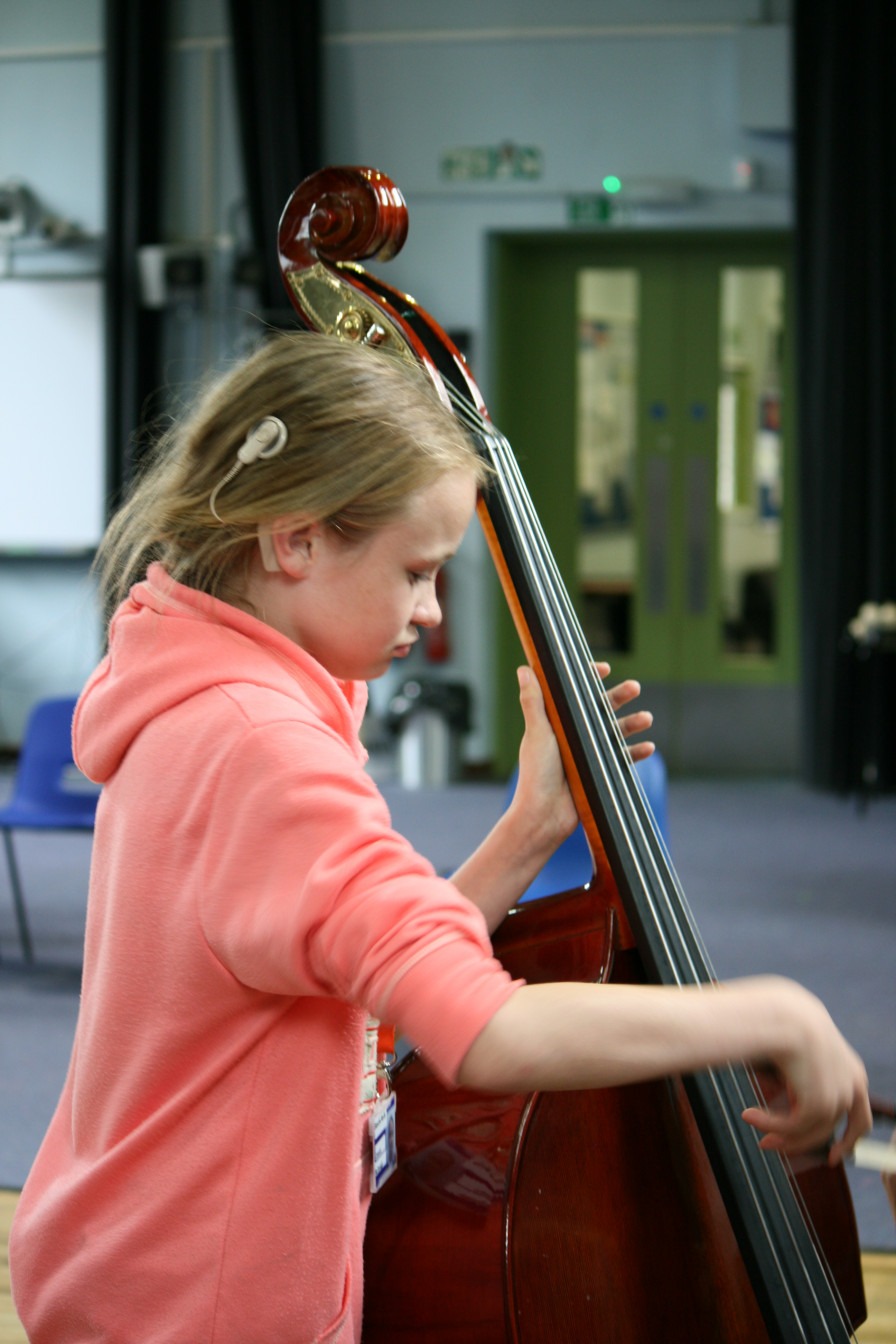Movement and Gesture: a multi-sensory approach to music-making with hearing impaired pupils

Sounding Out is a three-year music programme with deaf and hearing impaired (HI) pupils, now in its final year. It involves weekly workshops in one primary and one secondary school, as well as a research element being undertaken by University College London to explore musical progression as well as impacts on the communication skills of participants. In this blog our lead practitioner, Tiziana Pozzo, reflects on the interaction of movement, theatre and music, and on why a multisensory approach seems to achieve good results with these students.
Sounding Out is a three-year music programme with deaf and hearing impaired (HI) pupils, now in its final year. It involves weekly workshops in one primary and one secondary school, as well as a research element being undertaken by University College London to explore musical progression as well as impacts on the communication skills of participants. In this blog our lead practitioner, Tiziana Pozzo, reflects on the interaction of movement, theatre and music, and on why a multisensory approach seems to achieve good results with these students.
During the sessions we followed a progression of objectives starting with describing the parameters of sound such as pitch, duration, timbre and intensity; continuing with the identification of the sound source, and recognition of the timbres; and ending with musical production through improvisation and composition. This method allowed us to understand that an approach based on multisensory experience is much more satisfying and effective for children with hearing impairments.
It is widely accepted that a person with hearing impairments can access musical understanding more easily if sound is associated with tactile or visual perception. We plan our sessions with this in mind, during games, musical activities and in performance, and we have observed that the use of visual cues to instruct sound production engaged participants most effectively. We found that the use of body movement as a descriptive gesture of sound was the most successful of these visual cues. With movement, students discovered a tool for understanding and its associated musical meaning: the body became the fulcrum of the musical activity, and gestures added meaning to the different musical elements (pulse, volume, tempo, timbre etc.).
We also noted that children’s involvement increased when body movement took on particular symbolic and expressive meanings. For example, describing a story, associating an emotion to a gesture, or interpreting a character (such as an animal) led them to focus on the musical elements and gave them motivation for using this type of language. The use of the body as an expressive tool is part of daily life for somebody with hearing impairment and therefore these gestures are more easily transferable into the children’s musical learning.
During the past year we had the opportunity to collaborate with a school’s theatre group on an interpretation of the animal world. We proposed to our music students an activity to describe musically the scenes during the theatre performance by interpreting the actor’s body gestures into sounds. For example, during the imitation of an elephant by the theatre group, our students clearly visualised the different rhythmicity present in the movement of the elephant’s trunk (realised by the arm movement of one of the actors) and the movement of the ears (made by another actor). The children’s visual observations helped the teachers to introduce musical elements such as rhythm, speed and duration to synchronise with the actors’ actions. The sounds that described those movements were then analysed together (slow, fast, long, short, arrhythmic, rhythmic etc.) and finally transcribed using common musical signs or creating new symbols suitable for the children’s understanding.
This multisensory approach being much closer to the natural learning style of the children showed that the body can be played like a musical score made up of big and small gestures, rich in rhythmic patterns, volume, speed, timbre and many other elements. The visual nature of this activity allowed the children with hearing impairments to have a closer affinity with musical dialogue.
A full report on the project’s outcomes and research findings will be published by Creative Futures in the summer, along with a toolkit for music practitioners who work with HI children.
Tiziana Pozzo & Julian Knight, Creative Futures
